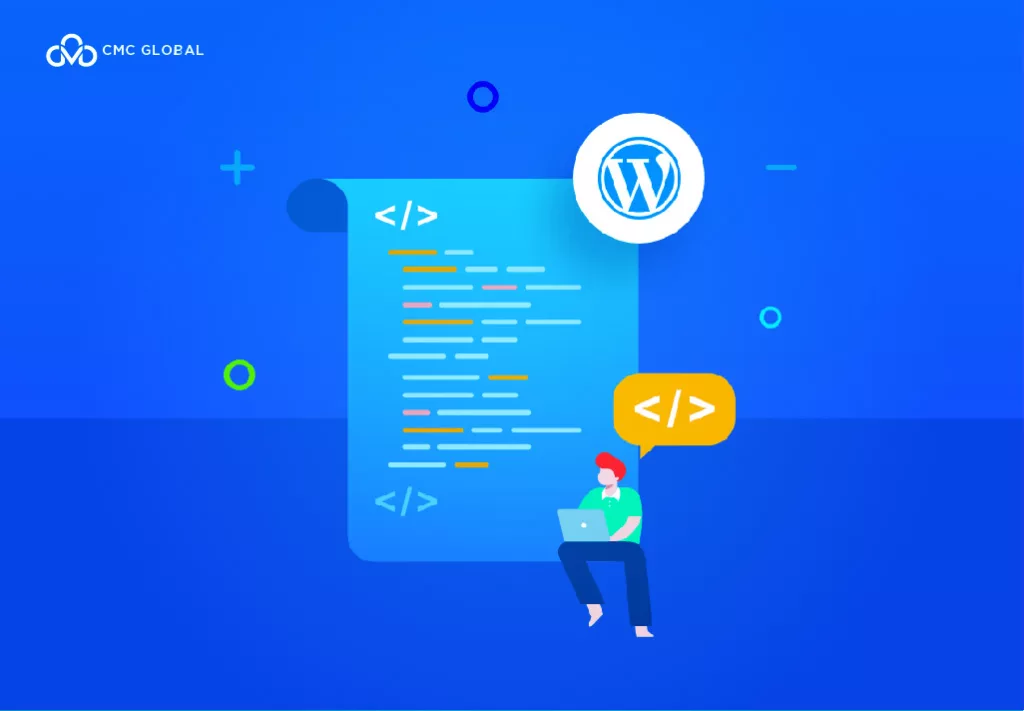Multiple industrial reports indicate that the proliferation of business mobile applications has resulted in notable concerns regarding storage capacity and performance in more than 70% of digital workspaces. To address these challenges, the most effective solution is the implementation of Cloud computing.
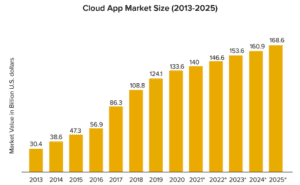
Cloud App Market Size (Statista)
Thus the demand for Cloud-based applications has increased significantly, leading to an increased demand for Cloud application development. As a result, the Cloud computing market has consolidated over the past few years. Cloud apps and services are used by almost everyone, including businesses, often without them knowing. SaaS tools, for example, are Cloud apps. However, Cloud apps are more than just that.
Many people still can’t grasp what Cloud apps are, but this article aims to explain. As transformative, international IT Services providers, we know businesses need to make proper use of Cloud services. Whether you want to understand Cloud computing and Cloud application development, learn how your company can benefit from them, or just get examples of Cloud apps, this article is for you.
Cloud Application Definition
The ‘Cloud’ is a term used to describe HiTech computing services that are delivered over the internet to different servers in various locations. Typically managed by third-party providers who charge fees in exchange for computing power and other Cloud-based services, Cloud services enable companies to access computing power flexibly, without the need to own or manage the IT infrastructure themselves.
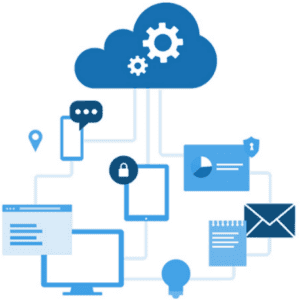
Cloud Application Development
Reduced latency, the delay between a user’s action and the app’s response, means that real-time and fast-response apps are possible, opening up new possibilities for businesses through better software.
Cloud-based apps can operate almost as smoothly as native apps on devices. With the advent of 5G connections, Cloud computing is becoming similar to Edge computing, which is helping to develop better IoT systems.
The Cloud market has become more important for a variety of industries, with the increased use of tools like Zoom and Google Meet, and Software as a Service (SaaS) apps like Netflix and Spotify.
By outsourcing IT infrastructure management, companies can focus on their core purpose, which has been a game-changer for many software-based companies and their IT-dependent business models.
Cloud Application Development Definition
Cloud app development is creating a Cloud-based app using software development stages. Top Cloud app development teams use DevOps and Kubernetes. But a good app development company should be able to build your app using any technology. Most Cloud-built apps depend on the Cloud to function.
Developing apps on Cloud infrastructure cuts web and PWA development costs and time if used with Agile methodologies. But not all companies can handle complex Cloud development aspects.
While some companies have their own Cloud development teams, most will hire an app development company with experience in Cloud services. A great way to verify an app development company’s experience with the Cloud is through certifications like AWS. CMC Global, our company, for example, is a certified AWS partner.
Cloud Application Examples
Cloud technology is widely utilized by numerous day-to-day applications, and its development has led to the emergence of remarkable tools and services.
Several instances may include:
-
Miro – a virtual board that enables fun and creative collaboration with other users. This virtual board can also be combined with other meeting platforms (Butter,…) for boosted interactivity.

Miro
-
Figma, a Cloud-based design app, is gaining popularity due to its powerful features and collaborative nature.
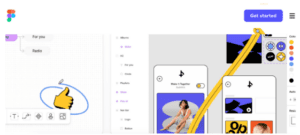
Figma
-
Most famously, Dropbox and Google Drive are file storage Cloud services that allow easy access to files from anywhere.

Dropbox
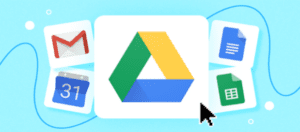
Google Drive
From the mentioned instances, it is clear and safe to conclude that:
Collaboration is a key feature of Unique Selling Point to most Cloud-based apps. While there are other essential elements, remote & international collaboration, even in real-time, is a prime advantage of Cloud apps.
Cloud Application Deployment: The 6 Steps
Cloud application development varies from web development services or mobile development services in that your staff should create cloud solutions based on the service provider you’ve chosen. For instance, Amazon Web Services (AWS) is one of the best and most trustworthy cloud application development alternatives, with many useful tools and capabilities.
One must be willing to invest resources while developing cloud applications, there are no exceptions. Before launching the development process, you must first have a better knowledge of your customers: identify their pains and consider how your product may solve them. That is the only way to compete in the market successfully.
This is an easy 6-step step-by-step tutorial on how step-by-step process of application development:
-
Step #1: Market & requirement research
-
Step #2: Find/hire your team of developers
-
Step #3: Requirements
-
Step #4: Application Designing
-
Step #5: Tech Research & Provider Choice
-
Step #6: App Deployment & App Maintenance
Step 1: Market & Requirement research
The first step in any process is market research, which involves understanding the current situation in the market and niche.
During the market research stage, it’s important to analyze:
-
Global Trends: “What’s going on globally?”
-
Evaluate Competitors: “How can you be different from them?”
-
Understand the target audience and their issues: “Who are they? What’s their problem?”
-
Determine your Unique Value Proposition: “What’s your value? How can you solve the problem for your users?”
The answer to the final question will be your hypothesis, which needs to be tested to validate its accuracy.
Step 2: Find/hire your Team of Developers
To achieve success in your project, you need a team of developers who can assist with technical aspects. This is especially crucial for startup development, where you require a team of polished programmers and product development experts to determine your product’s positioning and technical execution.
From my experience, developing cloud-based applications requires a team that meets specific requirements. These requirements include:
-
Product-centric: Not just programming, the team must understand the app’s purpose, objectives, and target users.
-
Expertise Diversity: Familiarity with different cloud providers is crucial, and a good development team should be able to identify differences between them and choose the most suitable one for the app’s needs.
-
Visionary Preplanning: Planning the app’s architecture effectively requires being flexible and forward-thinking, considering potential future needs, and anticipating how the app’s architecture can be adapted to accommodate them. This helps ensure the app remains scalable, flexible, and capable of meeting evolving user needs.
Step 3: Requirements Design
-
Before creating an MVP (Minimum Viable Product) for your cloud-based app, define its product scope with your product managers.
-
Identify the specific needs your app should address and create a list of basic product features that most effectively meet them.
-
Choose features that are closely aligned with your app’s core idea, require minimal development time, and provide a firm foundation for future expansion.
Step 4: Application Designing
After agreement upon the mentioned things, it’s time for the UI/UX Design Process to take place. The designers will draft a user-friendly interface, facilitating the end user’s interaction with the system.
Modifications and preparations can be viewed openly by the clients via (a third-party platform like Figma) for further comments and improvements.
The process of errors and trials and constructive criticism repeats itself until the work’s prepared estimates are completed.
Step 5: Tech Research & Provider Choice
Choosing the right cloud provider is crucial for developing cloud-based apps.
Many cloud providers are available, and they differ in pricing, services, and geographic reach. Evaluating these options carefully and selecting the provider that best meets your needs is essential for success.
The top most popular providers include:
-
Amazon Web Service (AWS);
-
Google Cloud Provider (GCP);
-
Azure
Many cloud providers offer pre-built solutions that can be integrated into your app as these providers aim to stay current with emerging tech trends.
Choosing the right provider is essential for success, so consider factors like pricing, services, and industry expertise to make an informed decision.
Here are several things to consider:
-
Security: Does the chosen cloud provider meet the required standards for data protection?
-
Scalability: Can you scale up your services with the chosen cloud provider?
-
Price: Is the storage cost-effective for your usage?
-
Data-processing speed: Doesn’t it lag down the performance of your app?

Top 3 Provider Options

Freelance Options
Step 6: App Deployment & App Maintenance
Following the launch of your app, it’s important to monitor its performance, identify and fix bugs, and make updates as needed.
In some cases, you may need to create custom updates for specific users or companies. Alternatively, one can also add new features, scale the app, and expand into new markets.
Conclusion:
Building a cloud-based app is the most likely scenario for app development. Although it presents some challenges such as security, architecture, and scalability, it also provides greater opportunities.
Cloud solutions can help to streamline business processes and reduce the need for maintenance, making them a cost-effective and time-efficient option.
If you are interested in learning how to choose a cloud provider, our team of 30 years of expertise in CMC Global can provide guidance and advice.
Contact us for further consultation!

